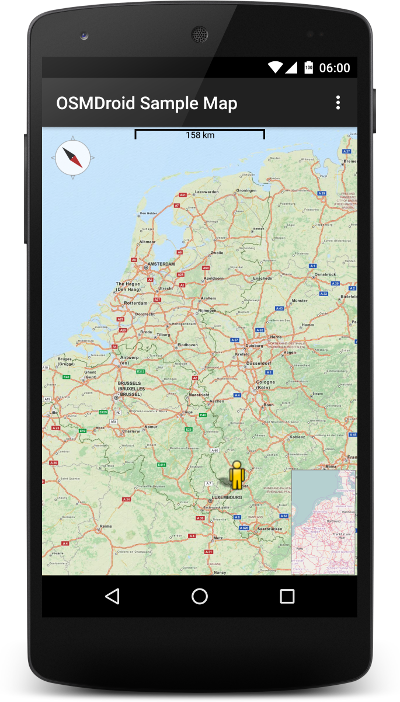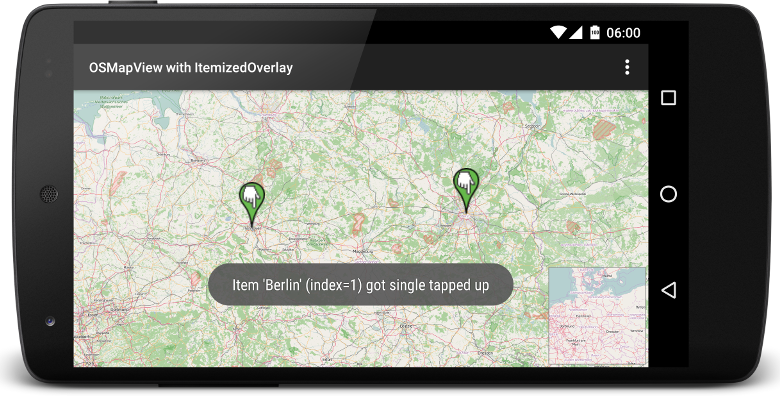osmdroid
osmdroid is a (almost) full/free replacement for Android's MapView (v1 API) class. It also includes a modular tile provider system with support for numerous online and offline tile sources and overlay support with built-in overlays for plotting icons, tracking location, and drawing shapes.
Current Release: 5.6.5 July 1th, 2017
Note: check your calendar, it may take up to a few days for all global mirrors to update.
Please read the osmdroid wiki for tutorials on integration.
Gradle dependency
repositories {
mavenCentral()
}
dependencies {
compile 'org.osmdroid:osmdroid-android:5.6.5'
}
Maven dependency
<dependency>
<groupId>org.osmdroid</groupId>
<artifactId>osmdroid-android</artifactId>
<version>5.6.5</version>
<type>aar</type> </dependency>Platform or API Level (API level 8 = Platform 2.2)
<platform>8</platform>You can also compile osmdroid from source or download the dependency directly from OSS or download the distribution package
OK now what?
Continue reading here, How-to-use-the-osmdroid-library
Related and important wiki articles
I have a question or want to report a bug
If you have a question, please view the osmdroid FAQ.
You can also view the Stack Overflow osmdroid tag and osmdroid Google Group where you can get feedback from a large pool of osmdroid users.
If you still have an issue, please check the Changelog page to see if this issue is fixed in a newer or upcoming version of osmdroid.
If think you have a legitimate bug to report then go to the Issues page to see if your issue has been reported. If your issue already exists then please contribute information that will help us track down the source of the issue. If your issue does not exist then create a new issue report. When creating an issue, please include the version of osmdroid, the Android platform target and test device you are using, and a detailed description of the problem with relevant code. It is particularly helpful if you can reproduce the problem using our OpenStreetMapViewer sample project as your starting point.
I want to contribute
See our contributing guide
I want more!
The OSMBonusPack project adds additional functionality for use with osmdroid projects.
Screenshots
Demo Videos
Building from source and using the aar in your app
Thanks to Gradle Fury, this publishes the artifacts to mavenLocal.
./gradlew clean install In your root build.gradle file, add mavenLocal() if not present.
allprojects {
repositories {
mavenCentral()
mavenLocal()
//add this if it's missing
}
}
Then in your APK or AAR project that needs osmdroid.
compile 'org.osmdroid:osmdroid-android:VERSION-SNAPSHOT:debug@aar' Where VERSION is the version listed as the value for pom.version in gradle.properties. Note that when using the release versions from Maven Central, drop the :debug@aar part. When using a "release" version that you build locally with gradle, you'll need :release@aar instead.


